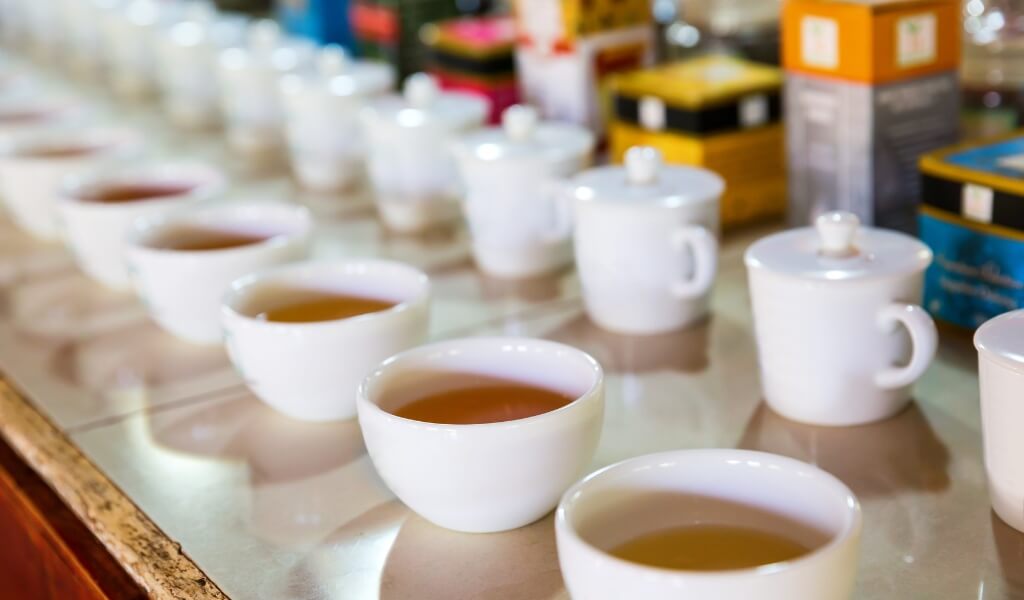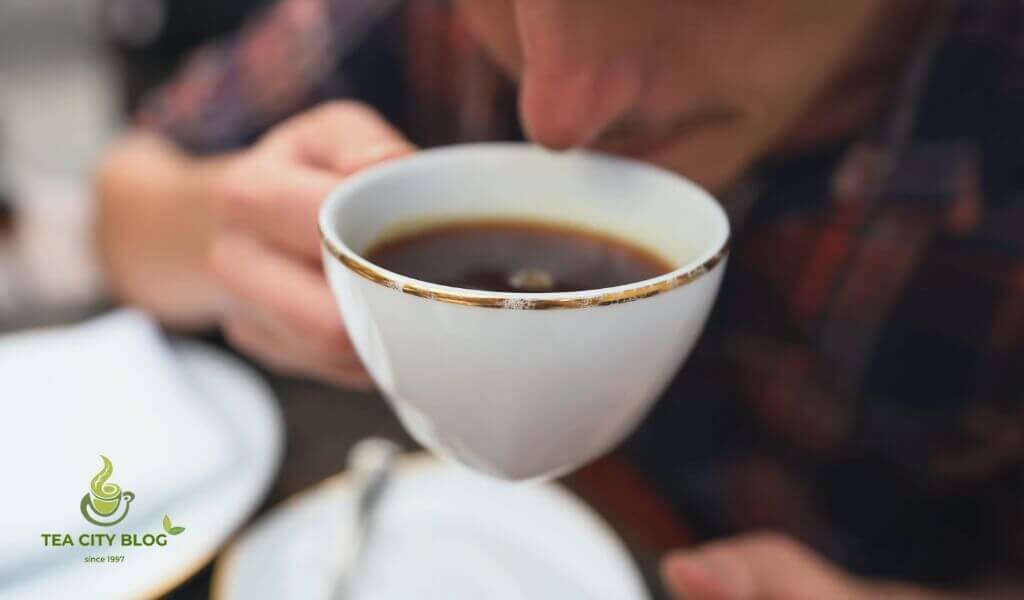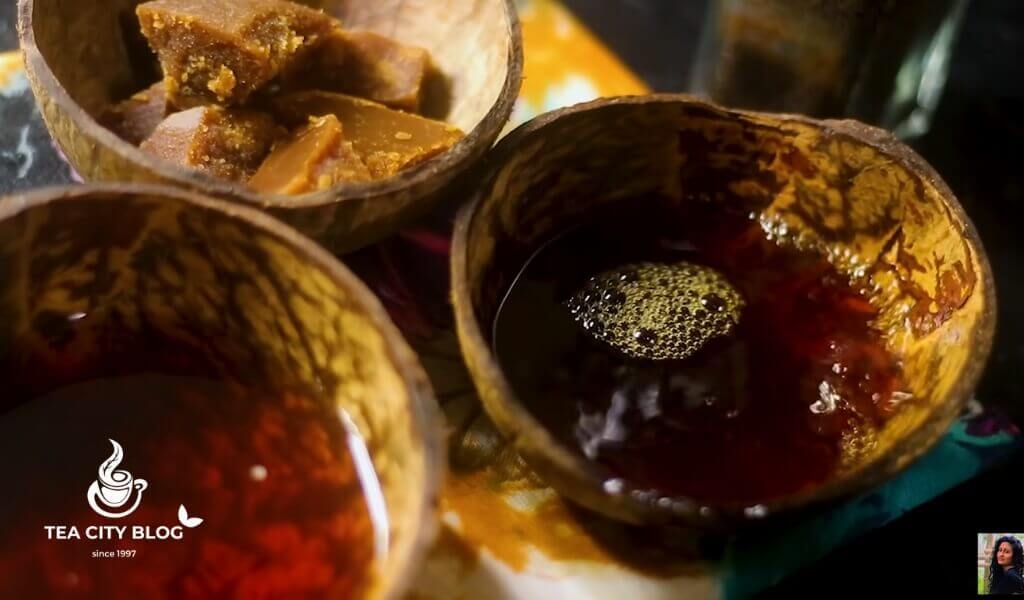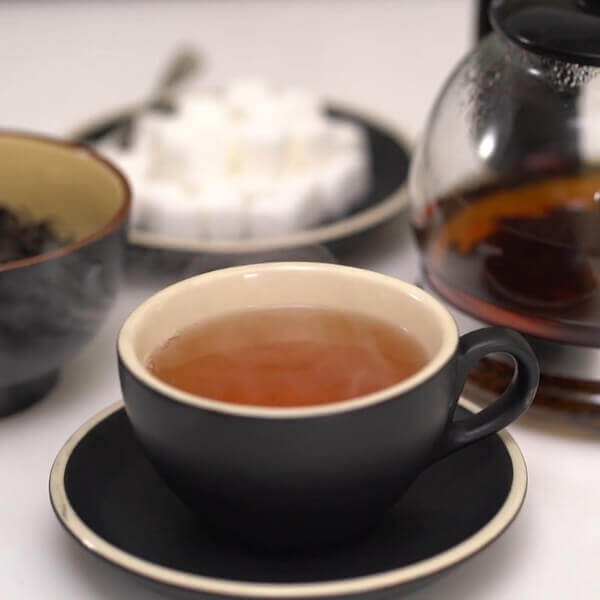As a devoted Ceylon tea enthusiast, I cannot help but share my love for Ceylon black tea, which holds a special place in the hearts of tea connoisseurs worldwide. Although it may not be as famous as other teas, every tea lover should try it.
From my experience, I can attest that Ceylon black tea’s distinctive taste and aroma set it apart from any other tea variety. What does Ceylon tea taste like? Let me share my insights with you.
Quotes of tea with You
“Where there is tea, there is hope.” – Arthur Wing Pinero
Tea from the Islands
Sri Lanka, a beautiful island in the Indian Ocean just southeast of India, has always captured my imagination. The tropical climate is quite warm, with temperatures typically hovering around the 80s (Fahrenheit) throughout the year.
Before gaining independence in 1972, Sri Lanka was called Ceylon. I find it fascinating that in the earl grey 1930s, the country’s tea trade became so successful that “Ceylon” was practically synonymous with “tea.” When the country changed its name in the early 1970s, it fought to keep marketing its tea as Ceylon, protecting the well-established global brand like Simpson & Vail or Dilmah it had worked so hard to create.
@gamiyatravel ceylon tea -best tea in the world
All tea, including Ceylon tea, comes from the Camellia sinensis plant. The leaves’ processing determines the final tea variety, such as black, green, or white tea. Over the years, I’ve learned that Ceylon has its tea cultivars that, combined with the unique terroir (the environmental factors) and processing methods, give Ceylon tea its distinct flavors, setting it apart from other teas.
Did you know the taste of Ceylon tea is classified according to…
Flavor by Region
In my experience with Ceylon tea, I’ve found that the elevation of the region where it’s grown provides valuable hints about its taste. Each unique region produces nuanced flavors, ranging from citrus and decadent chocolate to warm spices.
imalayas after enjoying Ceylon tea!
Generally, Ceylon tea regions are classified into three groups: low-grown, mid-grown, and high-grown.
Low-grown teas below 2,000 feet account for half Ceylon tea production like Dilmah. Black teas boast full flavors in these regions, vibrant orange citrus hues, honey, chocolate, and caramel notes. Most teas from these areas are processed as orange pekoes and flowery orange pekoes.
Mid-grown tea regions between 2,000 and 4,000 feet offer flavors that may vary depending on exposure to monsoon winds. Teas from these regions can be full-bodied and malty.
High-grown teas above 4,000 feet showcase a delicate, floral fragrance and light, brisk flavor. High-elevation teas are perfect for serving iced or with a fresh slice of lemon to enhance their refreshing qualities.
Next, I will share the actual content of this article…
What Does Ceylon Tea Taste Like?
Ceylon tea has a robust, rich flavor that isn’t harsh or bitter. It’s less astringent than black or green teas from China and India. The taste is floral, soothing, and tranquil, reminiscent of a peaceful afternoon in the Himalayas after enjoying Ceylon tea!
The taste is floral, soothing, and serene—just like the tranquil afternoon you’ll enjoy in the Himalayas after savoring a cup of Ceylon tea!
Through my years of exploring Ceylon tea, I’ve noticed the distinct difference in flavor between its various types. The unique processing methods significantly employed influence the taste, offering a one-of-a-kind experience for your palate.
Each variety of Ceylon tea has its signature flavor, which stems from how it’s processed – some rely on air-drying, while others undergo a natural fermentation process that lasts up to three days.
I’ve come to appreciate Ceylon tea, cultivated in India and Sri Lanka for centuries, for its delicate, light taste and hint of citrusy aroma.
To properly brew Ceylon teas, I suggest adding hot water and letting it steep for about three minutes before enjoying the iced cold. I typically use about two teaspoons of tea leaves for each brew cup.
The best way to brew Ceylon teas is using a ceramic pot or mug. Simply pour boiling water over your preferred tea type and savor the delightful flavors it has to offer.
Tip: I recommend trying a slice of lemon or a drop of honey to enhance its flavor. Ceylon tea flavor boasts bright citrus notes that can awaken even the most stubborn taste buds, similar to a refreshing splash of cold water on a Monday morning. Give it a try and see how it elevates your tea-drinking experience!
Read More:
- 15 Benefits Of Ceylon Tea: Unlock the Power with Me
- So, the question is, what is Ceylon?
Factors Affecting the Taste of Ceylon Tea
The taste of Ceylon tea is unique and is determined by various factors. It’s important to understand these elements to fully appreciate its aroma and flavor. The altitude, weather, soil type, and harvesting techniques all shape the taste of Ceylon tea. Check out the table below for a rundown of the key factors influencing its taste.
| Altitude | Soil Type | Climatic Conditions | Harvesting Methods |
| High | Red | Cool and Dry | Hand-plucked |
| Medium | Brown | Warm and Humid | Machine harvesting |
| Low | Sandy | Hot and Damp | Mixed method |
I recently had the pleasure of learning a new flavor of Ceylon tea while touring a tea estate as a professional tea taster. The tea’s flavor is greatly influenced by the size of the leaves, the time of harvest, and the methods used in processing. Every tea garden has a different strategy for assuring the quality of its tea.
During my visit, I was impressed by the care and attention the estate workers put into plucking the leaves at the right time. This created the perfect balance of sweet and bitter flavors in the tea. Even the most discerning palate can’t resist Ceylon tea’s unique, luxurious taste. With its distinct flavors, every sip is a true indulgence.
Terroir
I am aware that a variety of elements, such as a tea’s atmosphere and geographic origin, might affect how it tastes. Due to its special growth environment and processing method, Ceylon tea in particular has a distinctive flavor character.
It is useful to picture a table showing the numerous elements that affect Ceylon tea’s flavor.
This makes it easier for customers to comprehend how each factor affects the final flavor. Altitude, soil type, climate, and seasonal variations, for instance, can all have a big influence on tea flavor.
The rich and vibrant flavor of Ceylon tea is a result of innovations in planting and processing methods. While focusing on the distinctive qualities of Ceylon tea might help customers better enjoy its flavor, the specifics may not be required.
For generations, Ceylon tea has been one of Sri Lanka’s most significant exports and is popular all over the world. The addition of this fascinating tidbit adds a little spice without interfering with the article’s flow.
Similar to getting the ideal avocado, selecting the proper cultivar of Ceylon tea is all about that creamy, buttery flavor.
Cultivar
Plant variety is another factor that makes Ceylon tea tasting different. Check out this table with all the different cultivars.
In Sri Lanka, the cultivars Uva, Udapussellawa, and Kandy are also well-liked. Ceylon tea is genuinely unique since it is produced in various quantities and qualities in each district of Sri Lanka. Ceylon tea’s mouthwatering tastes and luscious scent make it impossible to resist. So make the most of the opportunity to sample each distinctive variety and discover the range of flavors.
Every cup of Ceylon tea is a genuine treat thanks to the expert tea producers in Ceylon who take processing to the next level, from withering to rolling and fermenting.
Processing
Turning fresh Ceylon tea leaves into the delicious drink we know, and love is complex and requires meticulous attention. This includes plucking, withering, rolling, fermenting, drying, and sorting, which can significantly impact the tea’s final taste, aroma, and mouthfeel. Factors like altitude and weather must also be considered to get the right flavor.
High-grown Ceylon teas have a unique flavor profile due to their exposure to different wind patterns, soil types, and temperatures while rolling the leaves (such as hand-rolling for a more earthy flavor or machine-rolling for a bitter taste) can also affect the final product.
To maintain the traditional flavor profile of Ceylon tea, it’s essential to stick to traditional tea-making techniques rather than commercialized methods. And the famous “taster’s cut” is said to have been created by a Sri Lankan tea industry who wanted more time to enjoy the subtleties of his favorite drink while evaluating samples for his clients.
By making smaller mouthfuls, he could extend his tasting time without sacrificing the quality of his evaluations. This innovation changed how tea was judged, leading to more in-depth and meaningful tastings today.
Sometimes we want to change a little taste for something new. Here are some of my experiences:
How to increase the flavor of Ceylon tea?
So, we guide you on Ceylon tea how to make with these tips helpful in enhancing its flavor:
- I always choose fresh, high-quality tea leaves to ensure the best taste.
- I pay attention to water temperature, using around 195-205°F or 90-96°C for black Ceylon tea.
- I use the proper tea-to-water ratio, about 1 teaspoon of tea leaves per 8 oz of water.
- I steep the tea for the appropriate time, typically 3-5 minutes for black Ceylon tea.
- I sometimes experiment with additives like lemon, honey, or milk to suit my preferences.
- Lastly, I store my tea leaves in an airtight container away from light, heat, and moisture to keep them fresh.
To enjoy the best taste of Ceylon tea, you should know.
When Should You Drink Ceylon Tea?
Ceylon tea is an ideal way to kick off your day positively! But, does ceylon tea have caffeine? With just enough caffeine, this beverage can boost energy and keep your mind sharp.
I find that the best way to enjoy Ceylon tea is with a few ice cubes added. Sipping this tea in the morning can give you that extra pep to tackle the day, but it’s also a delightful treat to savor anytime you need a pick-me-up.
Note: A study by the National Library of Medicine discovered that the antioxidants found in Ceylon tea could help lower the chances of getting cardiovascular diseases such as heart attacks and strokes.
Where to buy Ceylon tea
As a tea enthusiast, buying Ceylon tea from trusted retailers who source their teas directly from Sri Lankan estates is crucial. I’ve found many online stores and specialty tea shops that offer a wide selection of Ceylon teas, ensuring the best quality possible.
When I choose Ceylon tea, I look for key indicators like estate and region and certification marks such as the Sri Lanka Tea Board’s Lion Logo. I also pay close attention to ethical considerations, like sustainable farming practices and fair trade certifications, which help support the livelihoods of those producing the tea.
You can enjoy your Ceylon tea cup by purchasing from responsible sources while contributing positively to the tea community.
Pairing Ceylon tea with food
Over the years, I’ve found that Ceylon tea pairs wonderfully with a wide range of foods, making it a fantastic choice for any mealtime or occasion.
The robust flavor of Ceylon black tea goes well with rich, hearty dishes like pastries, meat pies, and full English breakfasts.
I also enjoy it with sweet treats like scones, fruitcakes, and chocolate desserts. Like green and white varieties, Lighter Ceylon teas beautifully complement fresh salads, seafood, and light sandwiches.
I’ve had great success experimenting with Ceylon tea-infused recipes, from tea-smoked salmon to Ceylon tea-infused ice cream. Hosting a Ceylon tea-tasting party can be a fun way to introduce friends and family to the diverse flavors of this fantastic tea and explore different food pairings together.
FAQs
Is Ceylon Tea Like English Breakfast?
In a nutshell, the answer is no. Ceylon tea offers a lighter, more refreshing experience. With less caffeine than English breakfast tea and a milder flavor than black tea, it’s a refreshing alternative for tea lovers.
Is Ceylon Tea Sweet?
Ceylon tea isn’t sweet but has a light, refreshing taste. You can enjoy it as is or optionally add sweeteners and flavorings to suit your preference.
Do You Drink Ceylon Tea with Milk?
Ceylon tea, a light and refreshing beverage can be savored without additives. While it’s been used as an herbal remedy for centuries, it’s also delightful.
What Does Ceylon Tea Smell Like?
Ceylon tea has a distinct aroma, often floral, citrusy, and sometimes subtly spicy. The exact scent can vary depending on what does Ceylon tea smell like? The specific region it’s grown in and the type of Ceylon tea—black, green, or white. Overall, its aroma is pleasant, refreshing, and inviting.
What is the Sri Lanka tea culture?
Sri Lankans love their tea almost as much as they love water! It’s common for people to drink at least three cups of tea daily, which is just the minimum. Tea culture Ceylon tea is known for its distinct flavors and aromas. The country’s diverse topography and microclimates contribute to the variety of teas produced.
Where can I buy high-quality Ceylon tea?
You can purchase high-quality Ceylon tea from trusted online retailers and specialty tea shops that source their teas directly from Sri Lankan estates. Look for indicators like estate and region, certification marks such as the Sri Lanka Tea Board’s Lion Logo, and ethical considerations like sustainable practices and fair trade certifications.
How do I brew the perfect cup of Ceylon tea?
For the ideal cup of Ceylon tea, use the recommended water temperature and steeping time based on the specific tea type. Generally, Ceylon black tea requires near-boiling water and a steeping time of 3-5 minutes, while green and white Ceylon teas need cooler water and a shorter steeping time. Experiment with brewing techniques and teaware to enhance the flavor and aroma.
What are some health benefits associated with Ceylon tea?
Ceylon tea contains antioxidants that may offer potential green tea benefits, such as supporting weight loss, digestion, heart health, and cholesterol levels. However, consulting a healthcare professional for personalized advice on incorporating Ceylon tea into your diet is essential.
Ceylon tea provides an excellent chance to pause and ponder the world around us. It’s incredible how something as simple as a cup of tea can significantly impact our lives.
As I savor Ceylon tea, which has been enjoyed for centuries, each sip reminds me how fortunate I am to experience something distinctive and exceptional. It’s a moment of appreciation I relish whenever I indulge in a cup of Ceylon tea.
Thanks for reading from Spiritea Drink
I’m Shanna, creator of Spiritea Drinks. I’m all about teaching people to grow their own food, tea, cook what they harvest, and eat with the seasons.






